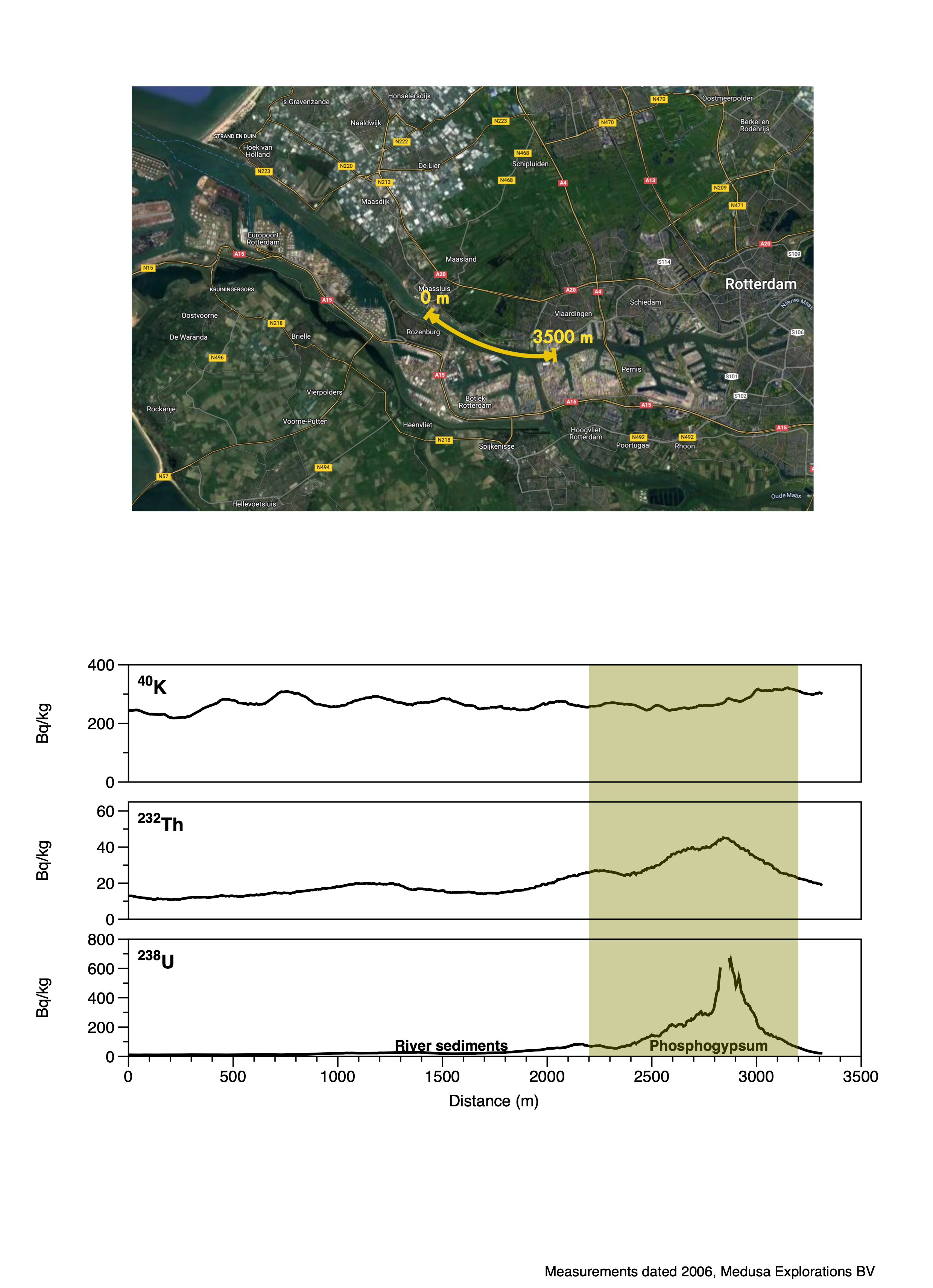Phosphogypsum
Phosphogypsum, a by-product generated by the artificial fertilizer industry, is derived from phosphate rocks that naturally contain uranium. When Phosphogypsum is released into the environment, such as in marine sediments, the concentration of uranium can be significantly higher, up to 50 times, compared to the surrounding sediments. However, the levels of potassium-40 (40K) do not exhibit enrichment, while the levels of thorium-232 (232Th) can be approximately twice as high as the background levels.
The figure illustrates measurements taken from the "nieuwe waterweg" site, which was previously home to a fertilizer factory. The data clearly demonstrates the elevated levels of 238U (uranium-238) in the sediment, attributed to the presence of Phosphogypsum.

